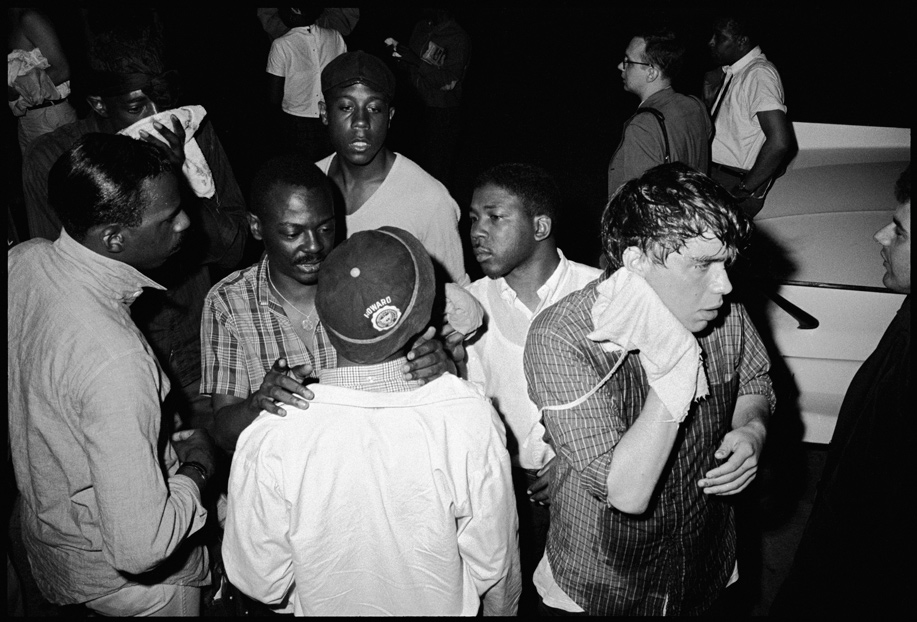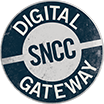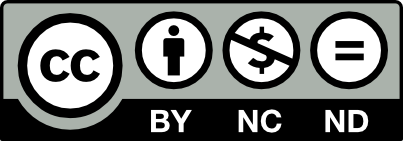Reggie Robinson
October 2, 1939 –
Raised in Baltimore, Maryland
In July 1961, at the height of SNCC’s intense internal debate over voter registration versus direct action, Reginald “Reggie” Robinson attended a coordinating committee meeting in Louisville, Kentucky, as a representative of Baltimore, Maryland’s Civic Interest Group (CIG). The meeting was being held in the home of Anne and Carl Braden. Robinson was wearing an eye patch. It was because of an accident–he’d been hit in the eye by a thrown pretzel at a party–but others at the meeting assumed he was attacked during a demonstration. This was his first SNCC meeting, and Robinson remembers his “appearance really helped add to the effect of my report” on voter registration in Baltimore, where CIG had registered nearly 10,000 Black voters.

Reggie Robinson (second from left) attends to demonstrators have have been gassed in Cambridge, MD, Spring 1963, Danny Lyon, Memories of the Southern Civil Rights Movement 140, Bleakbeauty.com
During a break in the meeting, Robinson was alone on the back porch of the Braden’s home when an older lady approached him saying, “Come here son; I want to talk to you because I think I know who you are.” The lady was Ella Baker, SNCC’s most important mentor, who coincidentally had grown up with Robinson’s mother’s family in Littleton, NC. The two talked for a while before Miss Baker introduced him to the rest of the group. With Miss Baker’s backing, Robinson became more active in the meeting. He convinced SNCC to host its next conference in his native Baltimore, after which he became a field secretary with the organization.
Robinson had joined CIG at the insistence of Baltimore City Councilman Walter Dixon, who was also the dean at Cortez Peters Business College where Robinson was taking classes. Robinson helped organize transportation and make placards for sit-ins and pickets. He became treasurer of the group, and during CIG’s voter registration campaign, he used his position to organize school buses to take people to the courthouse to register. When student leader Clarence Mitchell III left the organization due to family concerns, Robinson was voted to take his place as the group’s SNCC representative.
Given CIG’s success, SNCC, feeling that Robinson was a voter registration “expert,” asked him to join Bob Moses in McComb, Mississippi where SNCC was beginning its first voter registration campaign. When he arrived in McComb, Robinson was introduced to the key local people working with SNCC. One of them was George Head, a taxi driver. When Head picked up Robinson from the train station, he told the young activist to look under his seat. “You have your stuff and I have my stuff,” showing Robinson a gun, “in case we run into trouble.” Robinson and Head became good friends and regularly worked together while Robinson was in McComb.
Robinson spent his early days in McComb doing the spadework for the project. He set up a bank account and credit accounts at a local restaurant and office supply store. He helped open the voter registration school above the Burgland Supermarket, where he and other SNCC workers prepared locals to take the voter registration exam. Robinson, who had dropped out of high school himself, helped them understand the sections of the Mississippi Constitution, since the test required registrants to be able to interpret any clause of the state constitution to the satisfaction of the registrar.
SNCC left Southwest Mississippi in the fall of 1961 after white violence, including the murder of Herbert Lee, stymied its voter registration organizing effort. SNCC was still having debates about voter registration and direct action, but the work in McComb began to clear up the debate. As Robinson put it: “If you went into Mississippi and talked about voter registration they’re going to hit you on the side of the head and that’s as direct as you can get.” Robinson returned to Maryland and became active in desegregating Route 40 between Washington DC and New York City. He also worked in Cambridge, Maryland, side-by-side with Gloria Richardson. While in Maryland, Robinson introduced many northern students to SNCC. Judy Richardson, then a student at Swarthmore College, saw Robinson speak and was amazed “to see that kind of energy, no holds barred, speaking truth to power.”
Sources
Charles E. Cobb, Jr. On the Road to Freedom: A Guided Tour of the Civil Rights Trail (Chapel Hill: Algonquin Books of Chapel Hill, 2008).
Wesley Hogan, Many Minds, One Heart: SNCC’s Dream for a New America (Chapel Hill: University of North Carolina Press, 2013).
Peter Levy, Civil War on Race Street: The Civil Rights Movement in Cambridge, Maryland (Gainesville: University Press of Florida, 2003).




